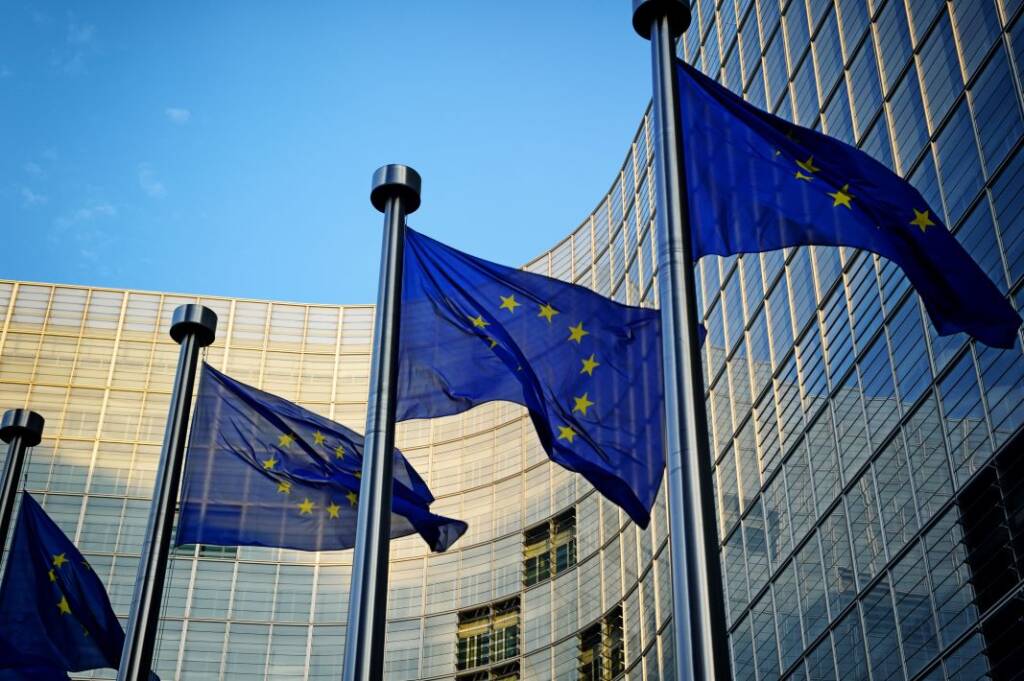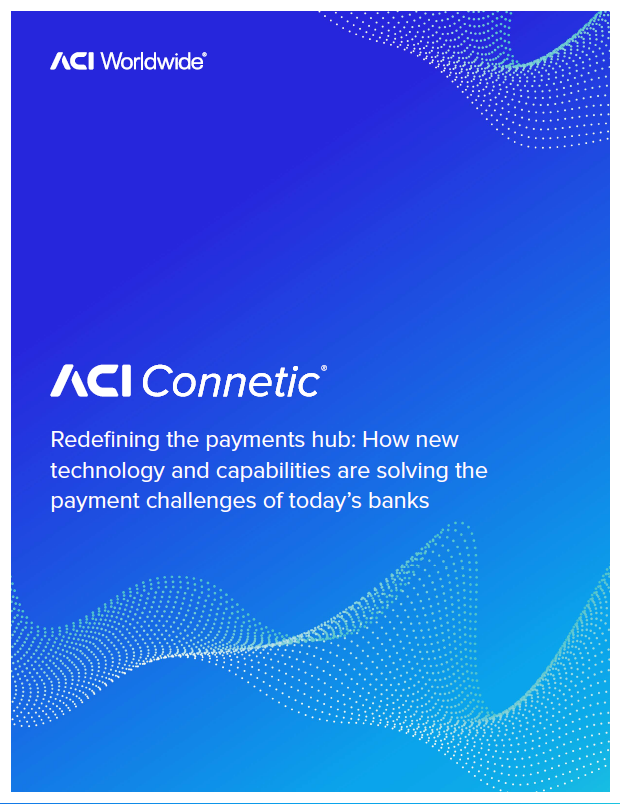- Solutions
- Banking
-
- ACI ConneticUnified cloud payments platform
- AcquiringDigital acceptance, merchant management
- IssuingDigital payments and accounts issuing
- Fraud managementReal-time enterprise fraud management
- RTGS / Wires and cross-borderMulti-bank, multi-currency processing
- Real-time, instant paymentsComplete real-time payments processing
- ATMsSelf-service, omnichannel digital experience
- Central infrastructureInnovative real-time payment infrastructure
- NEW Redefining the payments hub: Solving today’s banking payment challenges
-
- Merchant payments
- ACI Payments Orchestration PlatformEnable customer journeys across commerce channels, accept payments, prevent fraud and optimize your payments journey
- In-storeDynamic, modern in-store payments
- eCommerceOnline and mobile payments
- Alternative payment methodsGive more ways to pay
- Value-added servicesEngagement, optimization and reporting
- Fraud managementEnd-to-end fraud orchestration
- Risk, security, and complianceAchieve and maintain compliance
- NEW Datos names ACI Worldwide best-in-class in payments orchestration
- Industries we serve
- Billing and bill payments
- ACI SpeedpayDrive customer satisfaction with the widest range of bill pay options in the industry.
- Bill payment APIs and SDKsOutsource bill payment processing
- Fraud managementAI-based fraud orchestration technology
- Alternative payment methodsGive more ways to pay
- Loan servicingPreferred loan payment options
- Treasury managementStreamline and integrate your back office
- Automated debt collectionImprove your collections process
- Digital walletsManage digital cards and payments
- PCI compliance and securityAchieve and maintain PCI compliance
- Industries We Serve
- Fraud management and payments intelligence
- Fraud managementFraud solutions to minimize risk and prevent fraud
- Fraud management for bankingEnterprise-wide fraud prevention
- Anti-money launderingStay ahead of money-laundering schemes
- Robotic process automationAutomate payment processing operations
- Fraud management in the cloudProtecting your business in the cloud
- Fraud management for merchantsProtect payments from end to end
- ChargebacksPrevent chargebacks before they happen
- SCA complianceAchieve and maintain SCA compliance
- Digital identity solutionsConfirm identities with behavioral analytics
- NEW Scamscope fraud report: APP scam trends from around the globe
CompanyCustomersPartners
Home














The UK’s renewed RTGS service is live, and why now is the time to rethink your CHAPS access
For senior banking professionals, the renewal is more than an operational milestone. It is a strategic inflection point.

Unified corporate payments: How banks can win corporate clients with seamless service
On this page Corporate banking is undergoing digital transformation as clients demand faster, simpler, and more integrated services. One critical area of opportunity is corporate payments. Traditionally, companies have navigated a maze of payment types: domestic ACH, international wires via SWIFT, regional systems like SEPA, emerging real-time payments, and more.

Unified payments processing is the solution to banks’ crushing compliance burden
Surging digital payment volumes and related compliance demands are heaping pressure on banks to scale their processing capacity and optimize operations.

Banks are overwhelmed by payments data. Does unified processing offer a lifeline?
The volume of payments data available to banks today has surged almost to the point of overwhelm: it has created as many operational challenges as it has growth opportunities.

More widely available instant payments are coming to Europe: How Banks and PSPs can prepare for IPR
European payments are moving toward significant transformation as the European Parliament and the Council of the European Union (EU) adopted the Instant Payments Regulation (IPR) in February 2024, entering into effect on April 8, 2024.

Los sistemas de pago impulsan la expansión de los pagos inmediatos en Latinoamérica
Aunque los pagos inmediatos son una realidad desde hace muchos años, no se puede negar que la transformación que supone el “tiempo real” ha despegado en Latinoamérica a un ritmo vertiginoso. No obstante, la tasa de adopción varía enormemente de un país a otro.

Redefining the payments hub for a digital-first future
Discover how ACI Connetic is transforming payment infrastructures to meet the demands of modern banking

SEPA one-leg out SCT Inst (OCT Inst) : a great opportunity for new international services
Payment Service Providers in Europe should start looking at the significant possibilities offered by the newest EPC rulebook on One-Leg Out SCT Inst, to develop new business propositions by providing effective international transaction processing to their retail and corporate customer base.

Historias de éxito de los principales sistemas de pagos inmediatos del mundo
En busca de las ventajas económicas de unos pagos más rápidos y eficaces, la mayoría de los mercados más importantes ya cuentan con sistemas de pagos inmediatos o los están desarrollando, por lo que la atención se está centrando en impulsar su adopción.

Revealed: The Stories Behind the Success of World’s Leading Real-Time Payments Schemes
In search of the economic benefits of faster and more efficient payments, most major markets either already have real-time payment schemes in place or in development, and attention is turning to driving adoption.

How New Zealand’s Banks Can Prepare for Upcoming Account-to-Account Real-Time Payments
Next-generation payment schemes, underpinned by the real-time transfer of funds, have become commonplace around the world. Most major markets are now either live with national account-to-account (A2A) instant payment capabilities or have them in development. And research from ACI and GlobalData forecasts that real-time payments will account for 27.8% of all electronic payments globally by 2027.

5 top payments trends for Brazil in 2023
The real digitization of payments is just starting in Brazil, but 2023 will definitely be a very important year for the country.

How Scale, Simplicity and Flexibility Transforms Payments-as-a-Service
Sam Jawad, ACI’s Executive Vice President and Head of Banks & Intermediaries, explains how managed services for payments have evolved over the past two decades, and how banks can take advantage of the ongoing evolution in cloud architectures.



